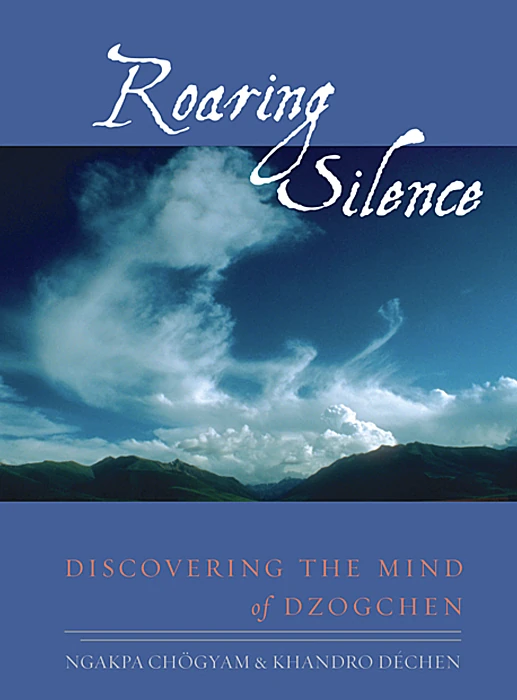
The Vetali’s Gift was inspired by a brief tale told by Ngakpa Chögyam and Khandro Déchen in their book Roaring Silence. That is an introduction to meditation in the style of Dzogchen. My novel’s chapter “The dead don’t think” closely follows their chapter “Thoughts and Clouds,” which introduces the same preliminary meditation exercises the vetali gives Surya.
In fact, the whole of the first part of The Vetali’s Gift, up to and including “The dead don’t think,” could be read as a mere embroidering of the story in “Thoughts and Clouds.”
That is told in the second person. “You” live in a village not far from the Himalayas. Seeking spiritual answers, “you” set off on a quest, hoping to meet a remarkable person described only evasively by religious advisors. Will this mysterious figure deign to answer your questions? Can you pass their inscrutable tests of suitability? You make a difficult journey up into the mountains, guided by prophecy, culminating in a remote valley. There, in a cave, you encounter a peculiar woman, who has somehow expected your arrival already for weeks. Apparently she has both magical powers and extraordinary meditative accomplishment. She gives you a series of tasks—tests, it seems—the same as those in “The dead don’t think.”
The Vetali’s Gift grew in part from my wondering: Who was that woman? What was she? Why did “you” go in search of her? What exactly were her powers, and what was their source? And what happened next, after the events recounted in parallel in “Thoughts and Clouds” and “The dead don’t think”? My answers are different from Ngakpa Chögyam and Khandro Déchen’s, but perhaps they rhyme.
To understand better “The dead don’t think,” you might like to read “Thoughts and Clouds,” which explains the purpose of the non-thinking and continuous-thinking exercises.
You might also like to read the whole of Roaring Silence. You may find that it inspires you to start meditating; or changes your relationship with your current meditation practice. The Dzogchen style is quite different from those most often taught. It is vivid, clear, joyful, expansive, and eventually effortless.
You may find the Dzogchen view clarifies and expands your understanding of Life, The Universe, And Everything. You may also find that it makes sense of many otherwise-obscure details of The Vetali’s Gift.
Roaring Silence includes some practical exercises, but it is primarily a book about meditation, rather than a practice manual.
Opening Awareness is a meditation manual you may find complementary. It provides detailed instructions for practices similar to those described in Roaring Silence. It particularly addresses troubles you may encounter, and how to counter them. It also explains how the Dzogchen style differs from mainstream meditation, and how to switch if you are inspired to. (I think the book is exceptionally helpful, but I’m prejudiced, since my spouse Charlie Awbery wrote it.)
A last point, not about either of these books, but about “The dead don’t think.” Many meditation systems (not all!) aim for a state analogous to death. Some historians think the original aim of meditation was to prevent rebirth by dying, in some sense, while still alive.1 Various forms of meditation aim for cessation of emotions, of thoughts, of selfness, of perception, or of consciousness. Different conceptions of resulting states may describe them as “emptiness” (shunyata) or “absence of self” (anatman/anatta).
Since the dead don’t think or feel, Buddhist iconography often symbolizes emptiness or non-self with skulls, with corpses, — or with vetalas.
In “The dead don’t think,” the suggested aim is cessation of thought. That is also an aim of the first preliminary Dzogchen meditation, shi-ne. Both Roaring Silence and Opening Awareness mainly discuss shi-ne. Emptiness and non-self are not aims of Dzogchen overall, though!
Death can be a nice place to visit, but living there full time would be tedious.
- 1.Johannes Bronkhorst, Two Traditions of Meditation in Ancient India.
